Abstract
The received view is that psychology has undergone several scientific revolutions similar to those that occurred in the physical sciences. Of these, this paper will consider the cognitive revolution. Because the arguments in favor of the existence of a cognitive revolution are cast using the concepts and terms of revolutionary science, we will examine the cognitive revolution using accounts of revolutionary science advanced by five influential philosophers of science. Specifically, we will draw from the philosophical positions of Popper, Kuhn, Lakatos, Laudan, and Gross for the purpose of discussion. We conclude that no substantive revolution took place according to these accounts. This conclusion is based on data gathered from some of the major participants in the “cognitive revolution” and on a general scholarly survey of the literature. We argue that the so-called cognitive revolution is best characterized as a socio-rhetorical phenomenon.
Keywords: scientific revolution, cognitive revolution, fallibilism, paradigms, research programs, research traditions, rhetoric of science
Full text
PDF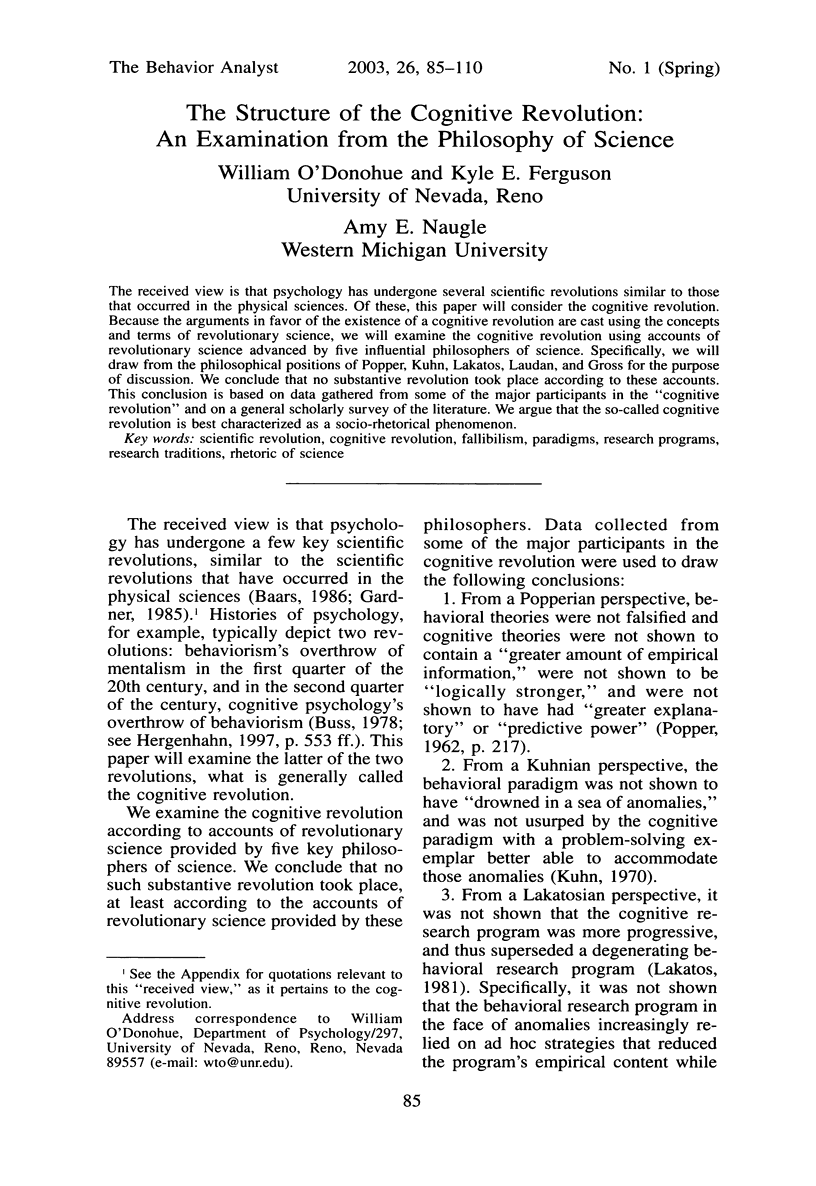
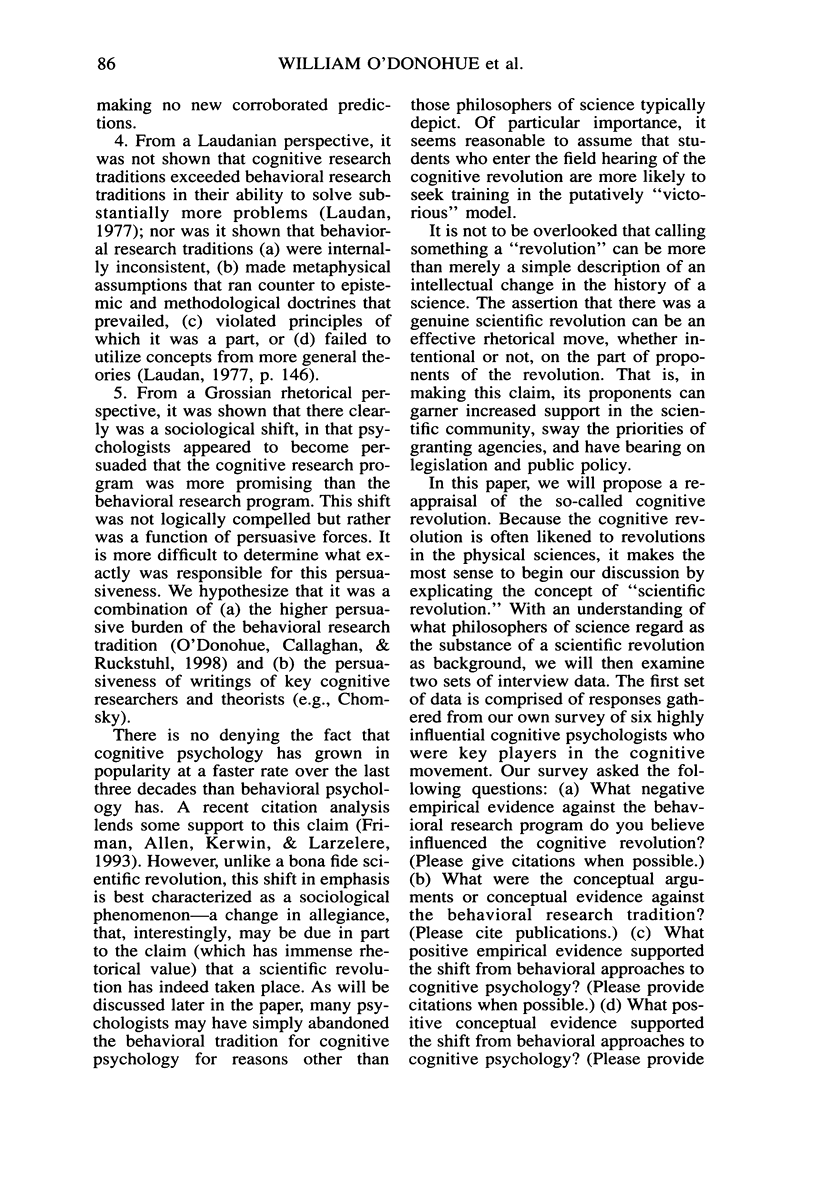
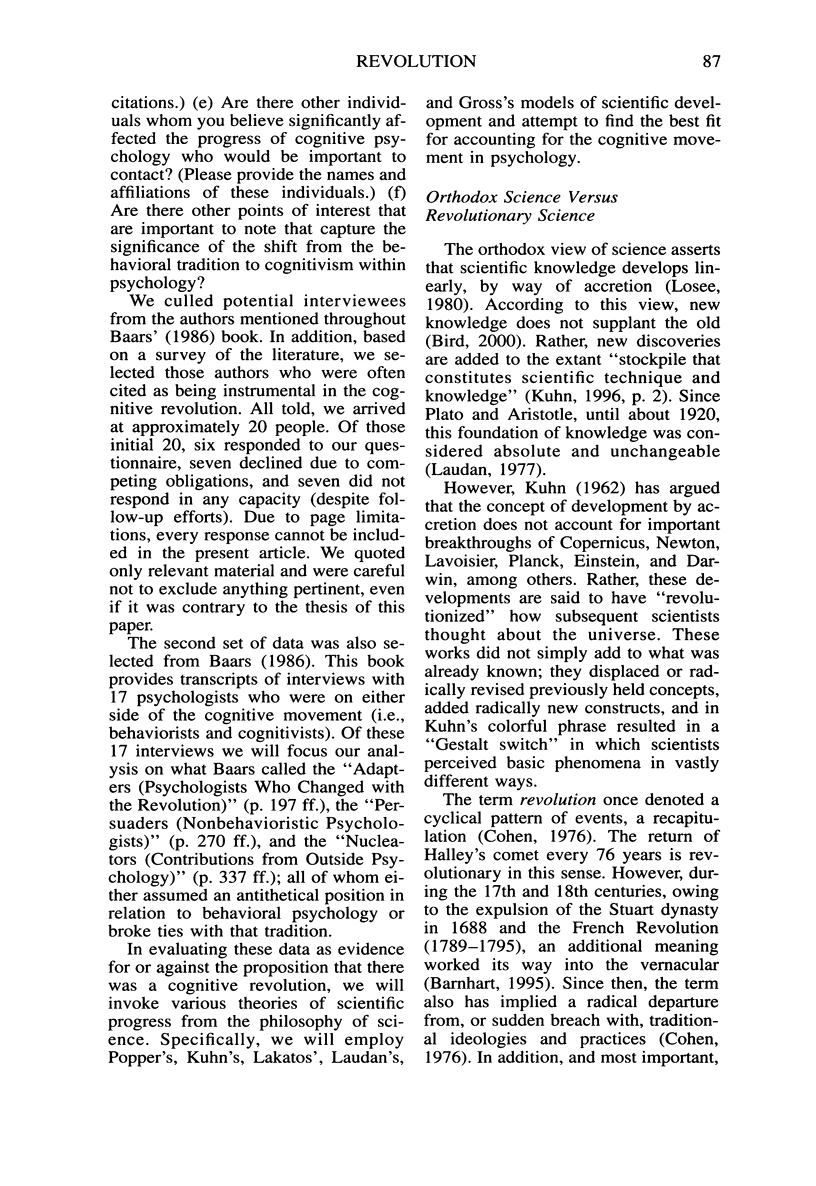
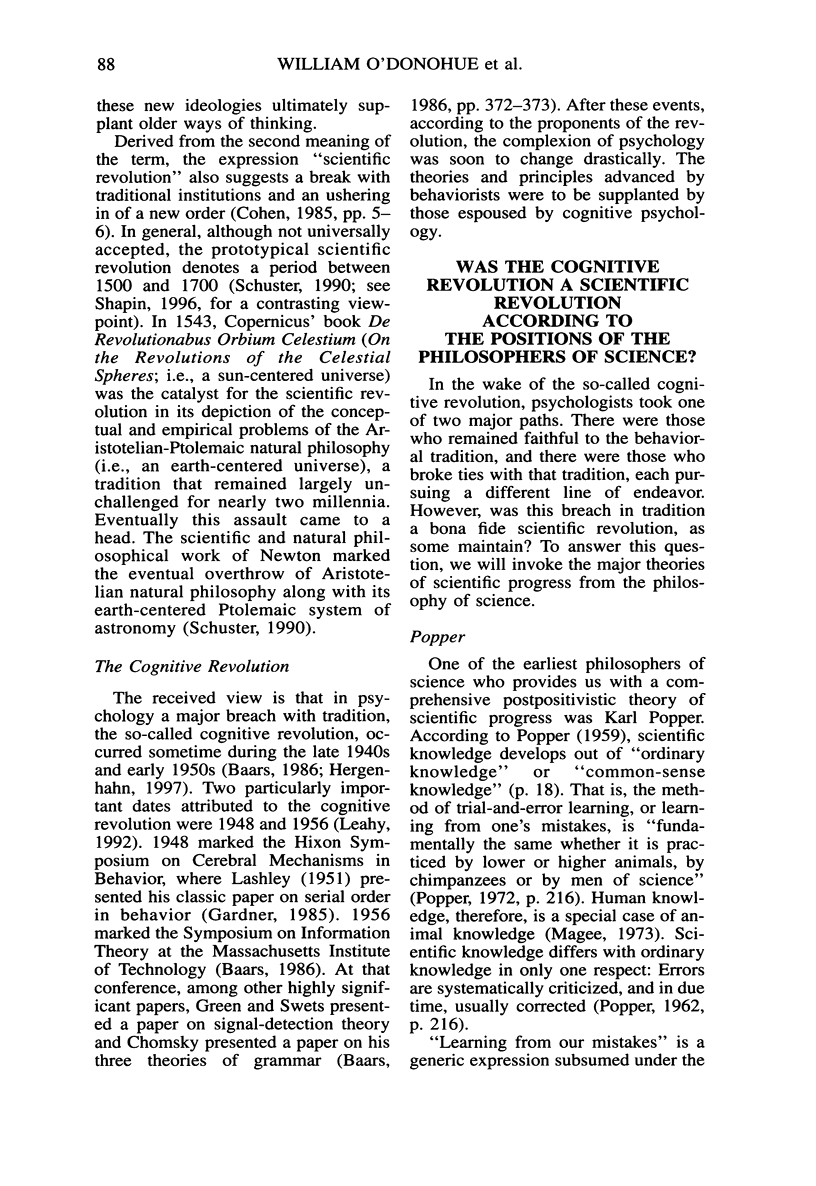
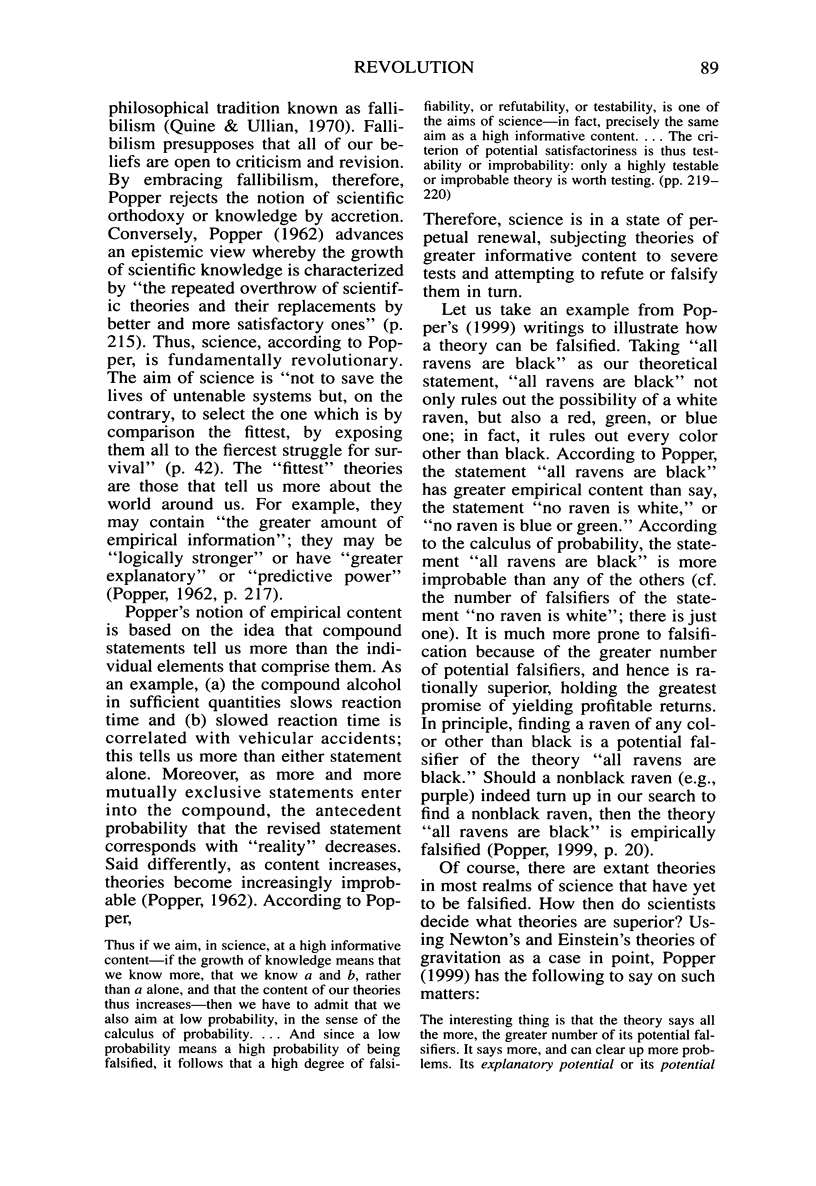
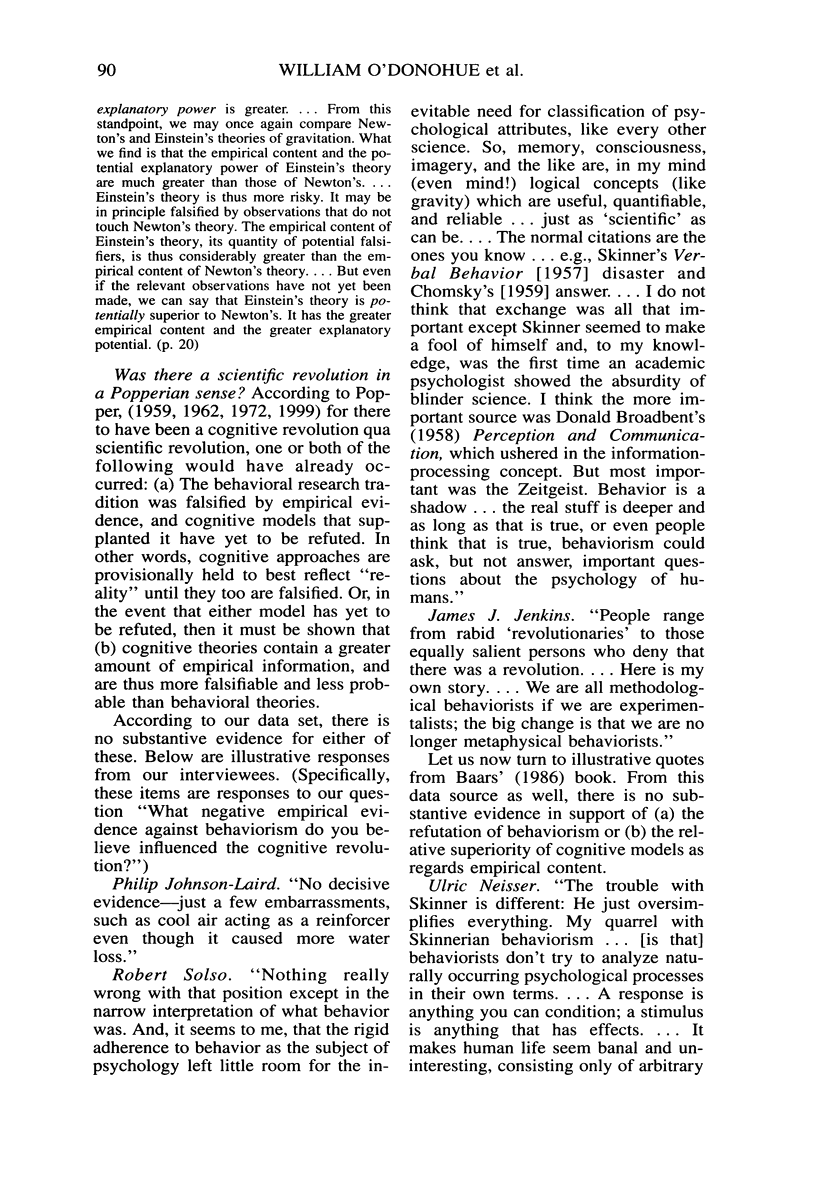
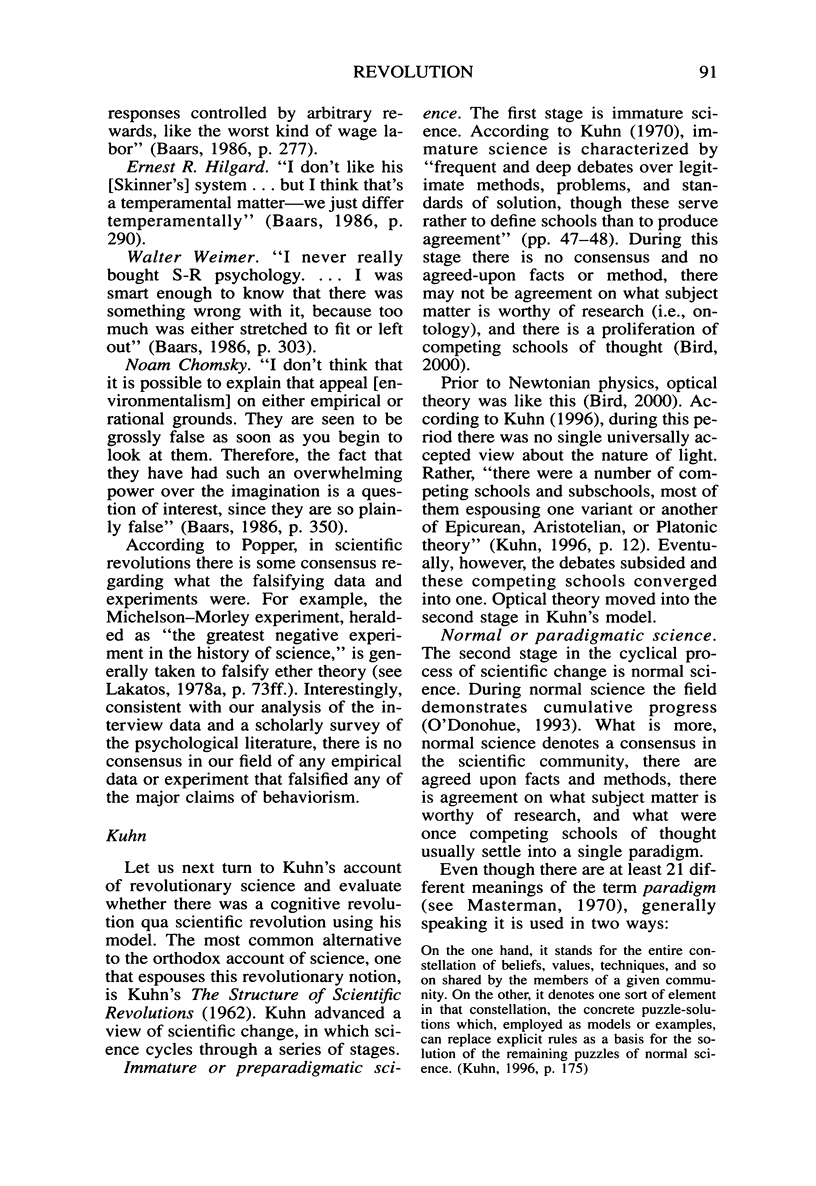
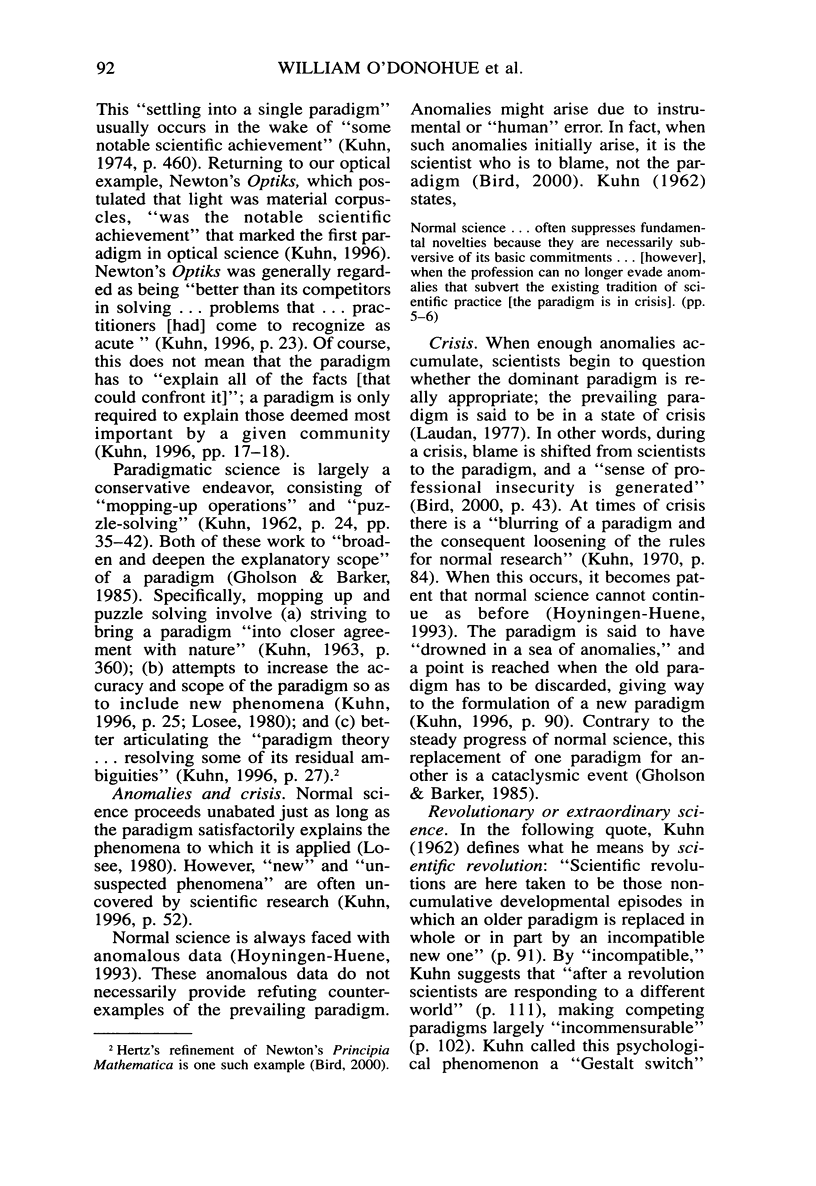
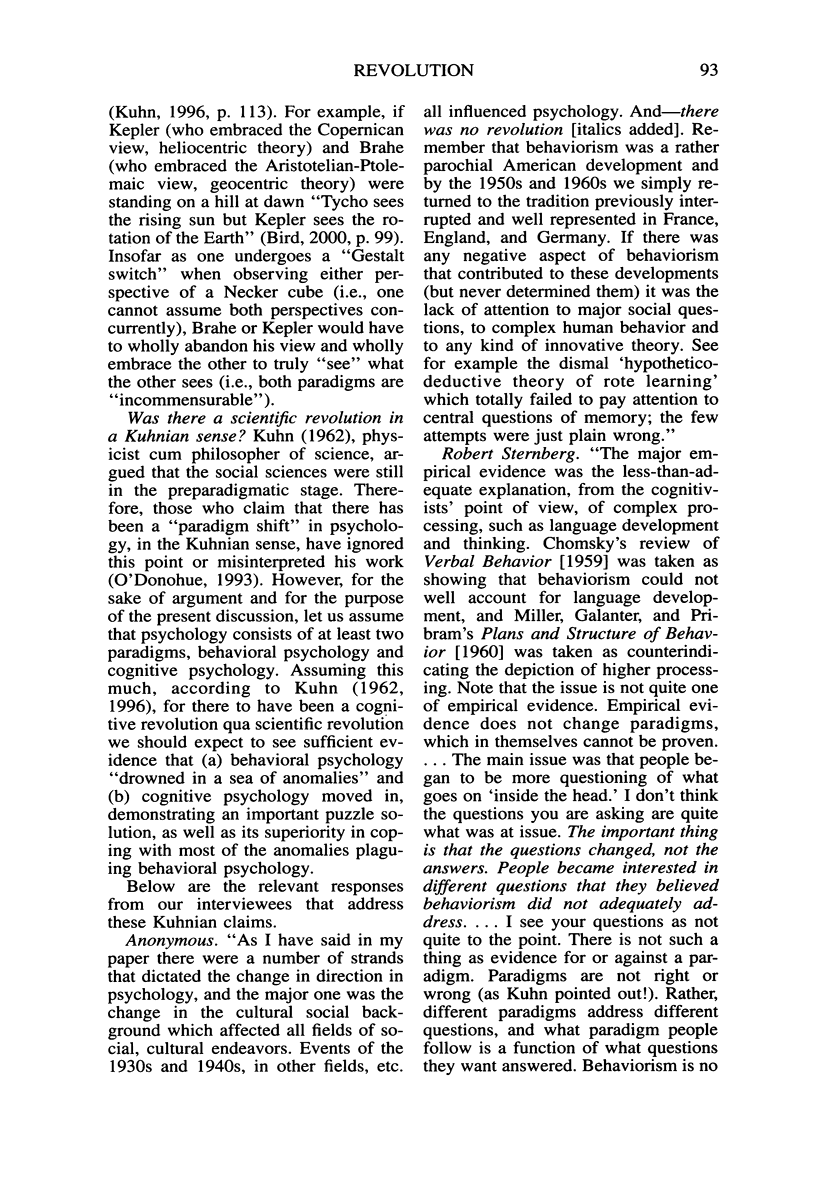
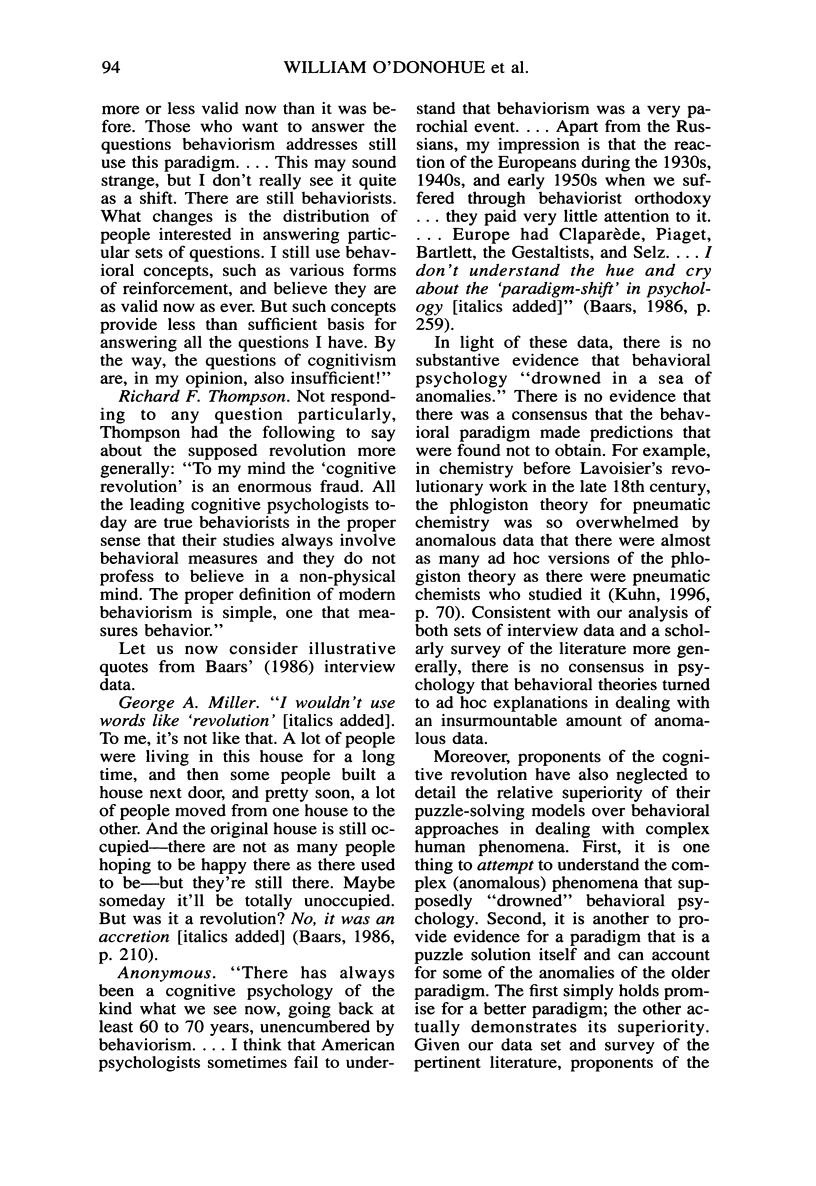
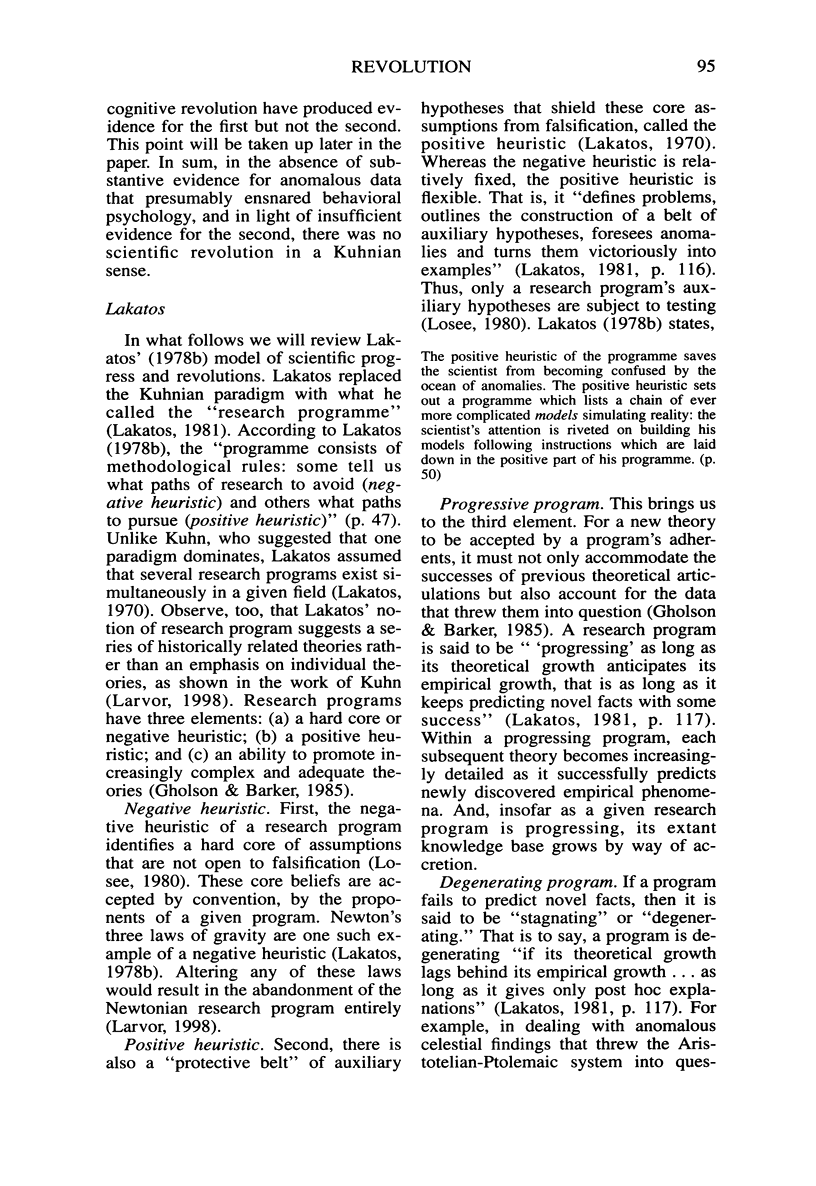
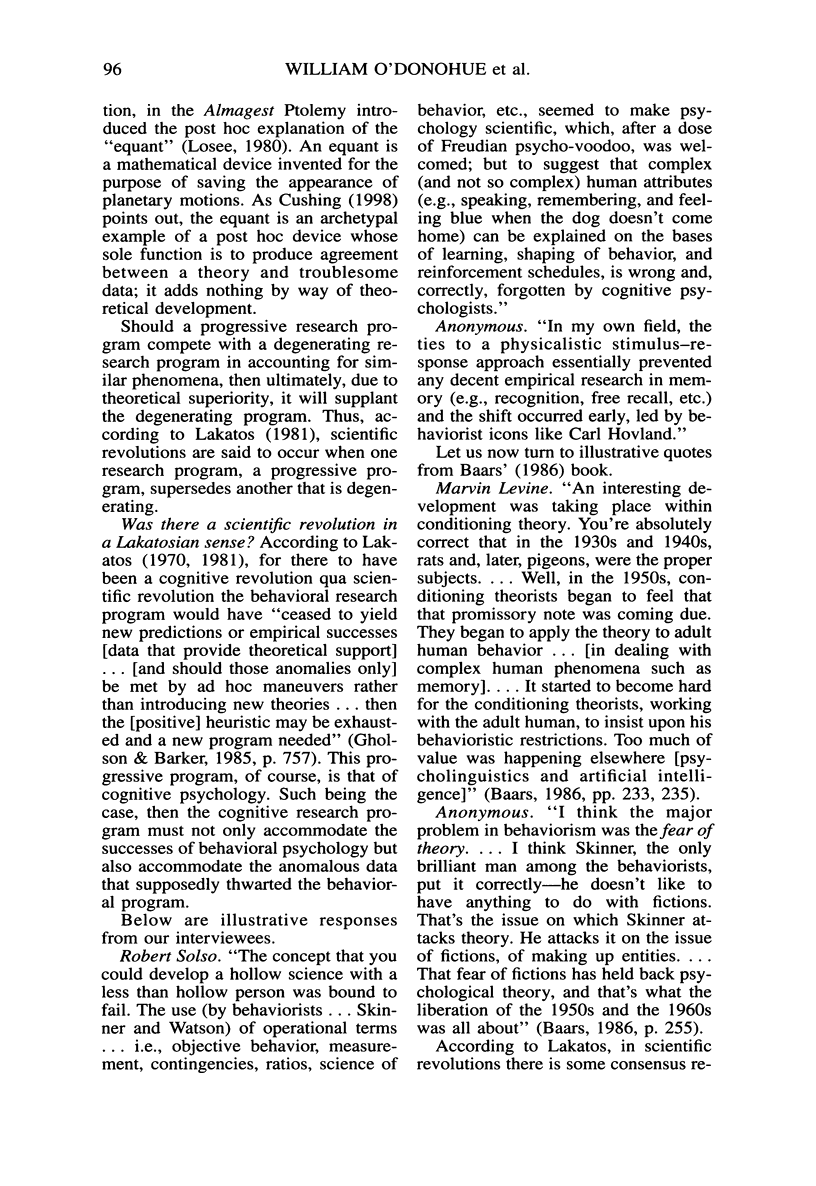
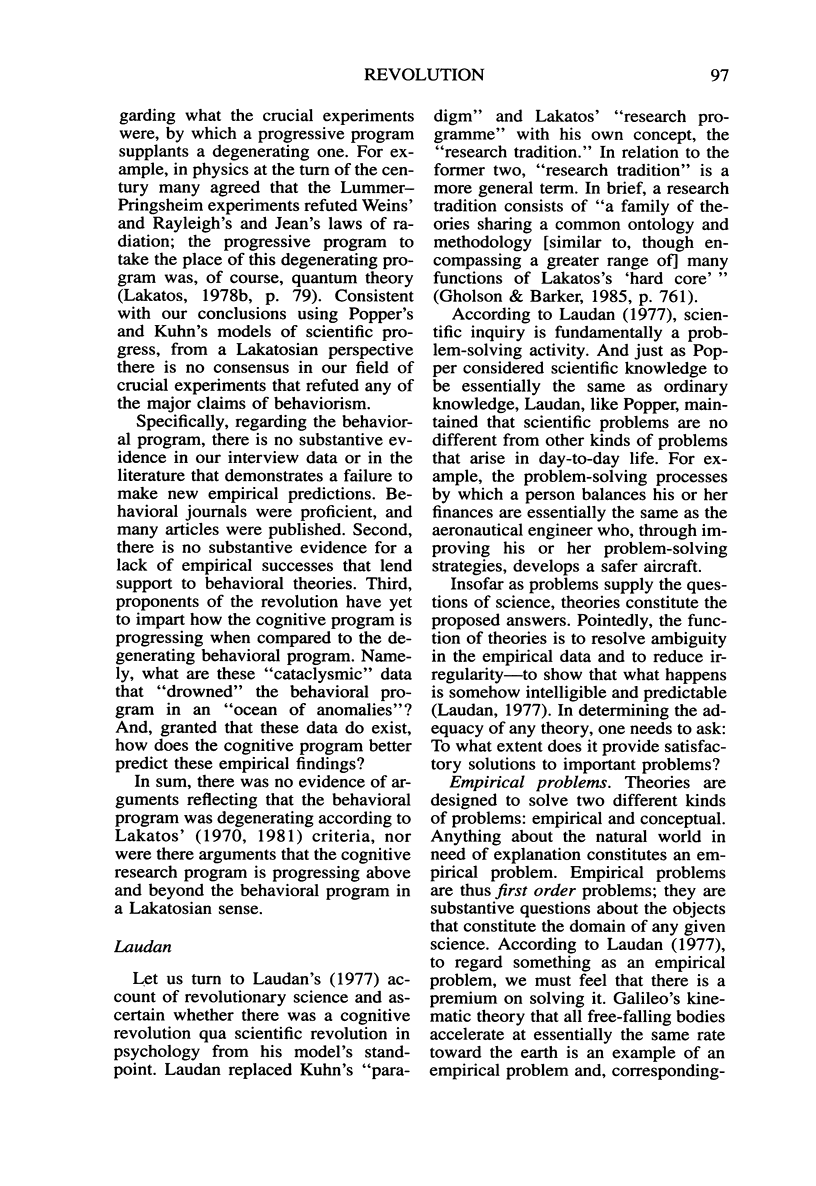
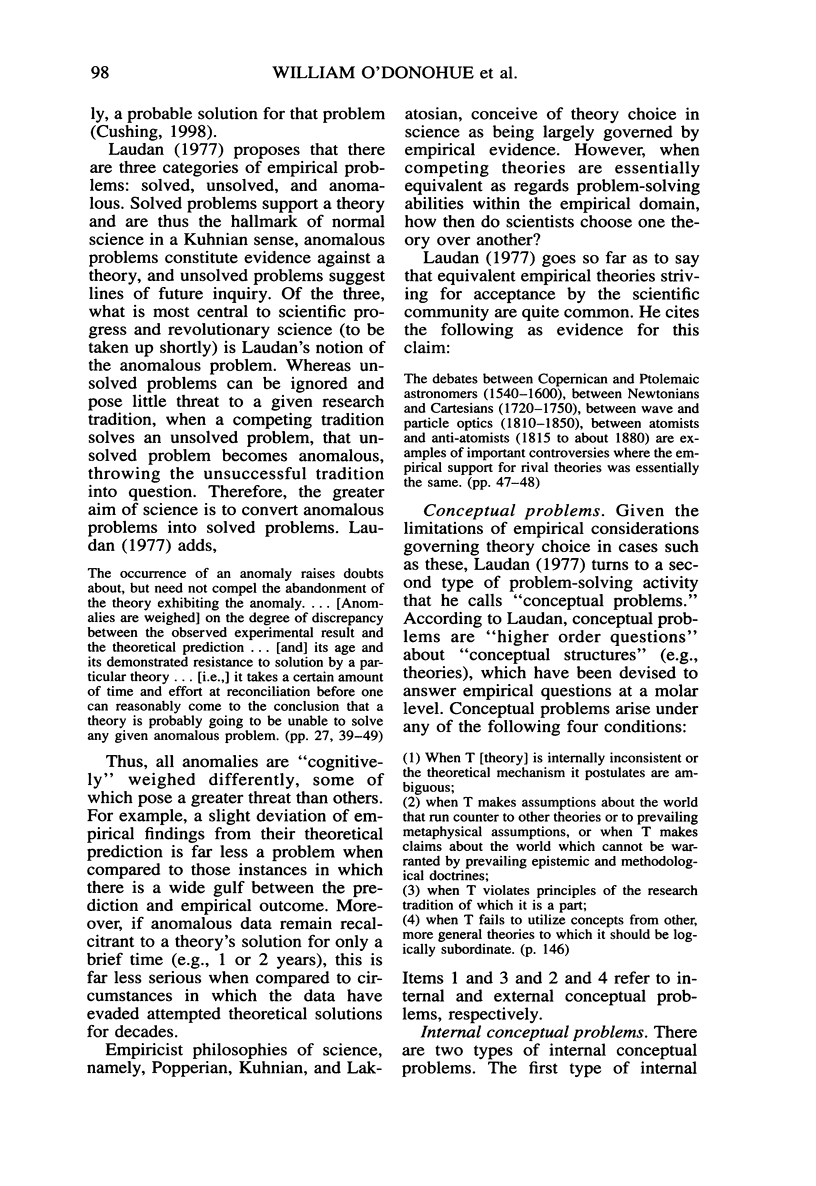
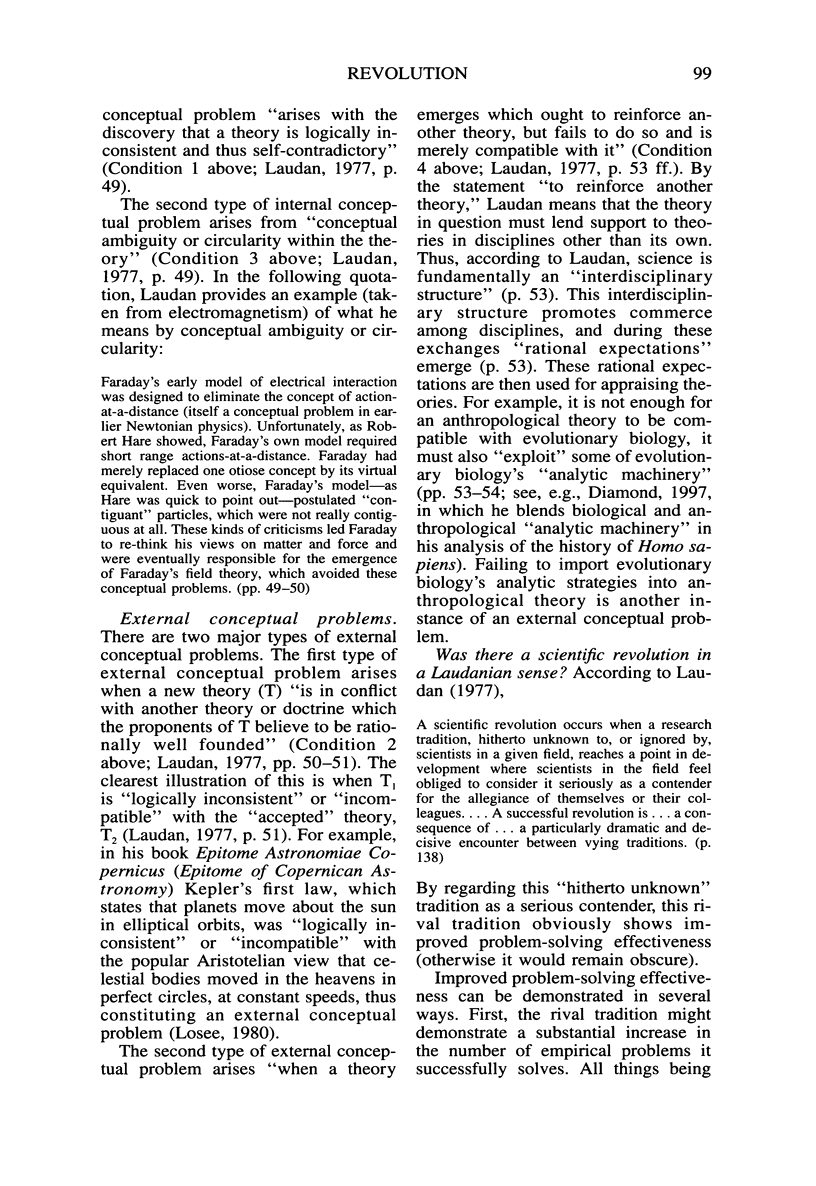
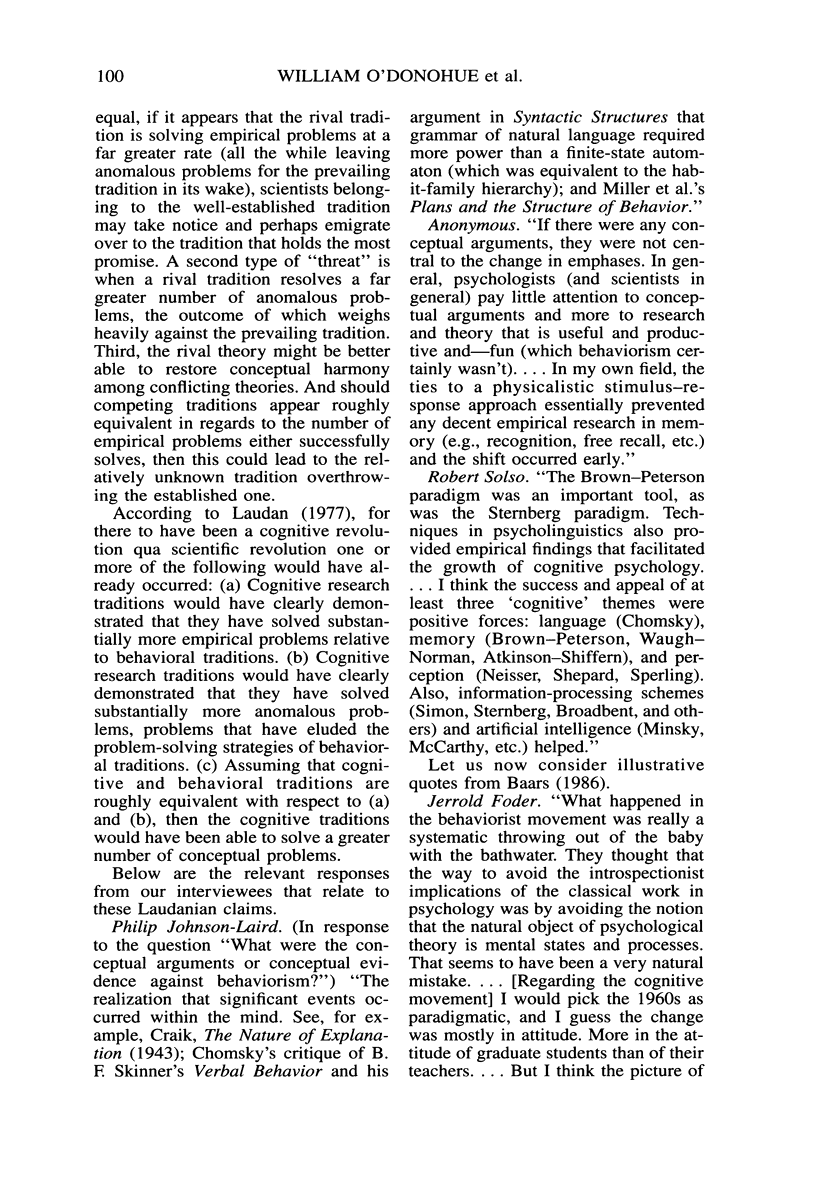
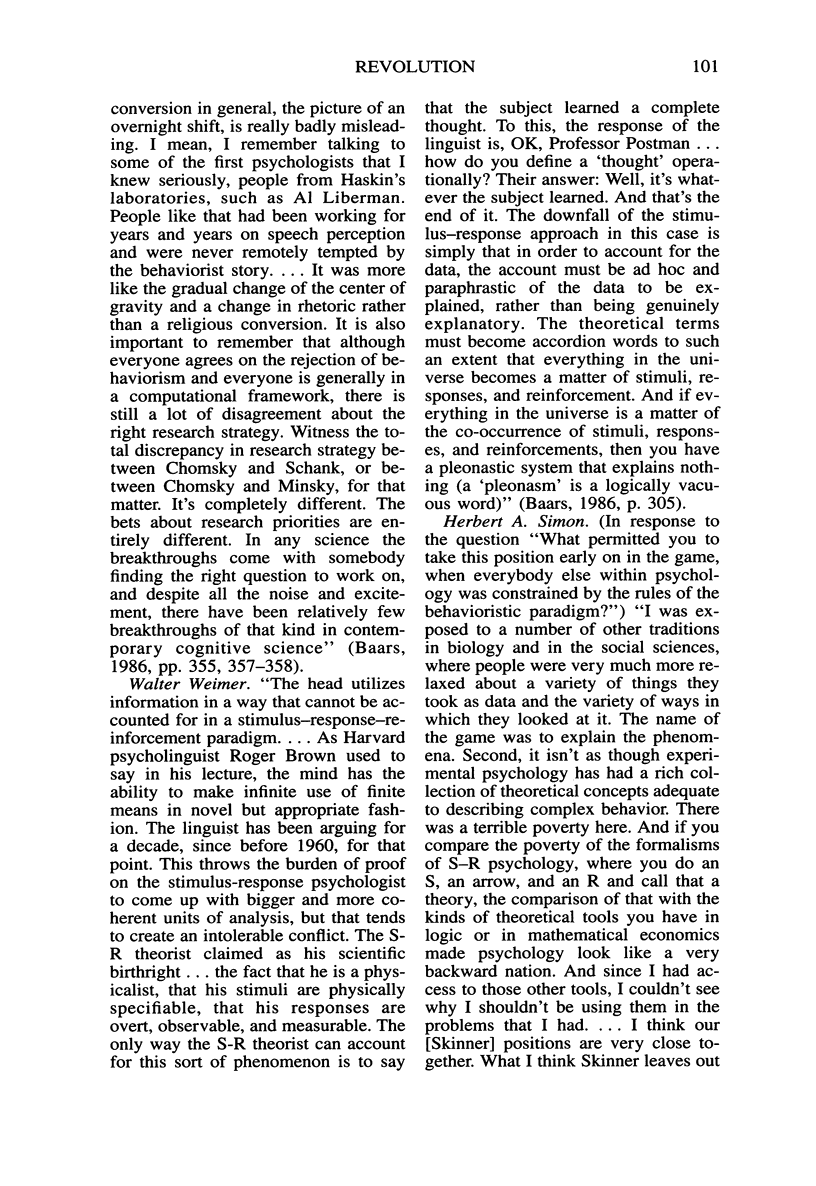
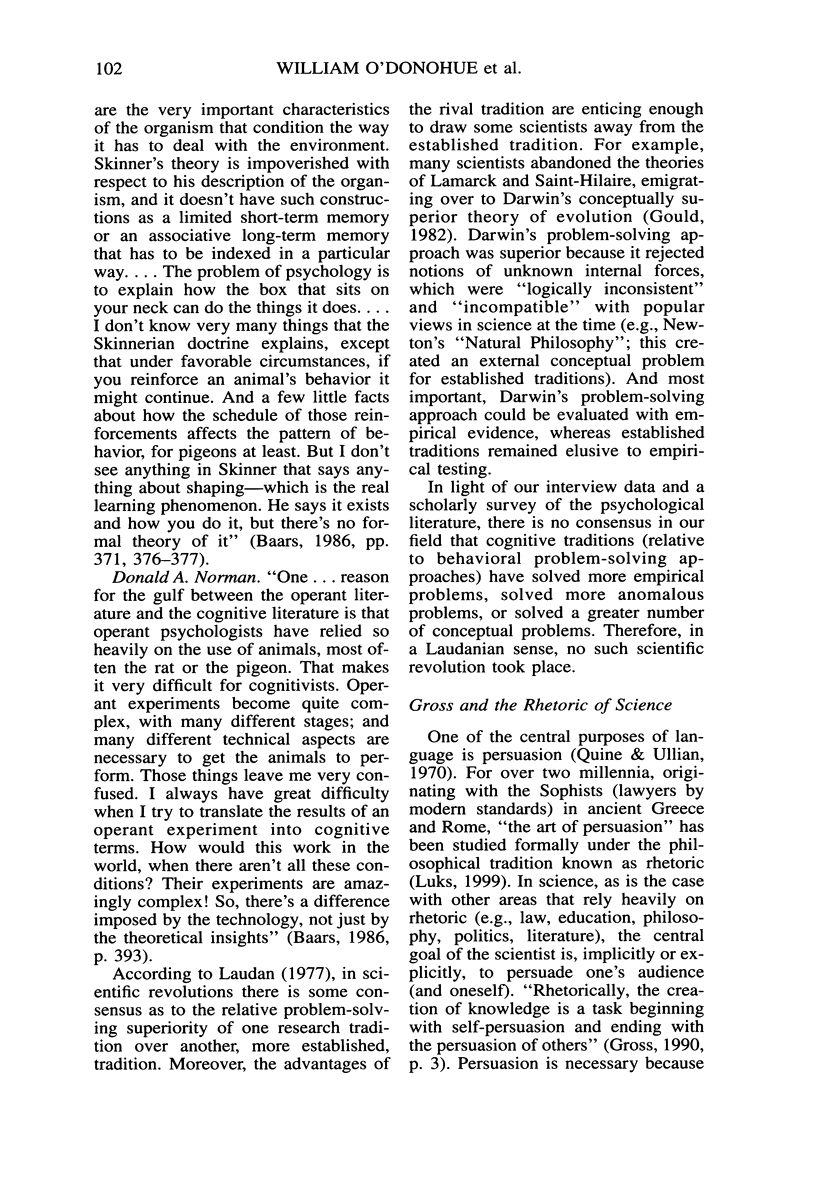
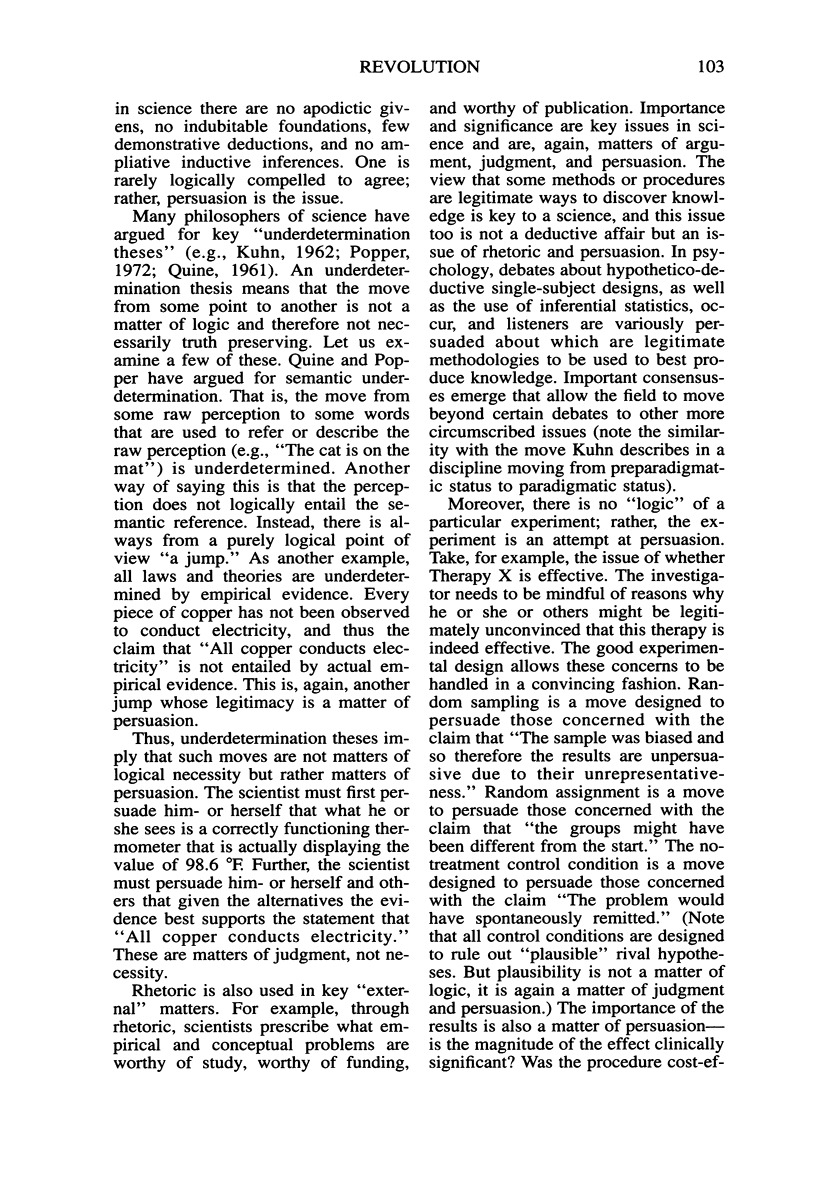
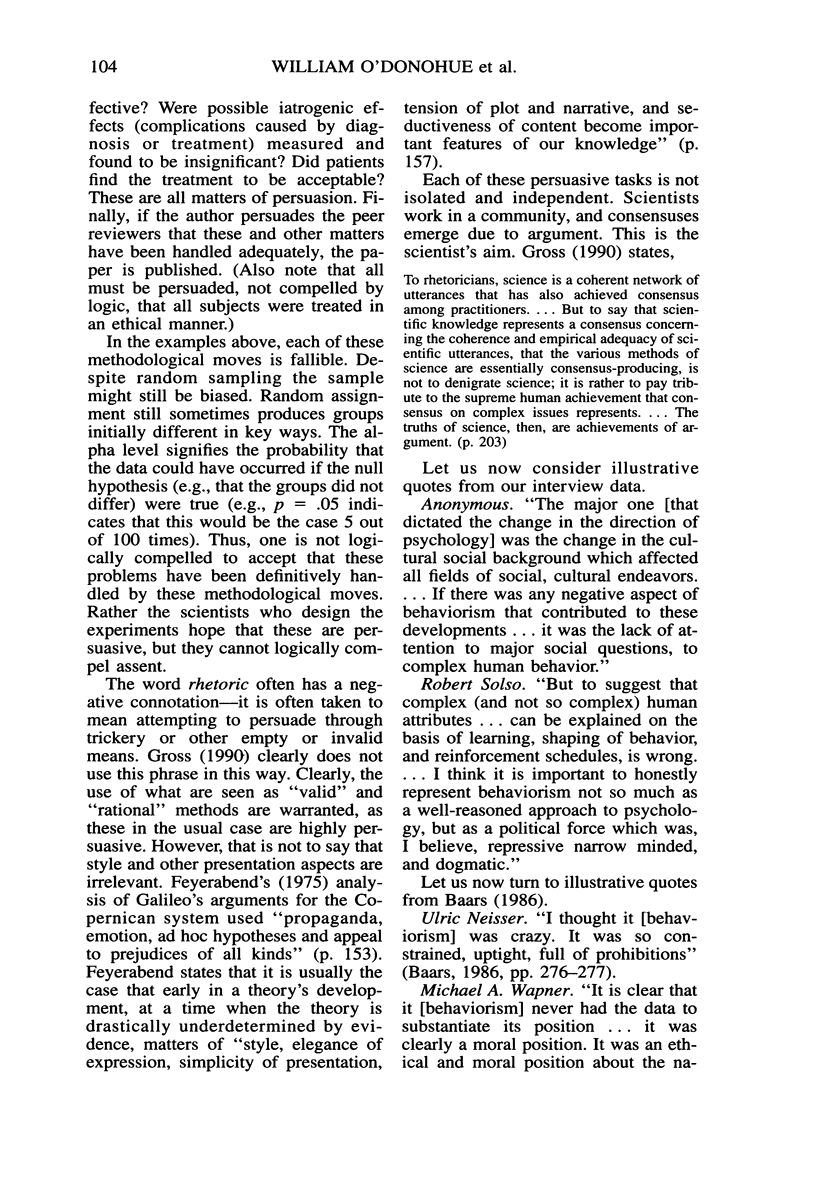
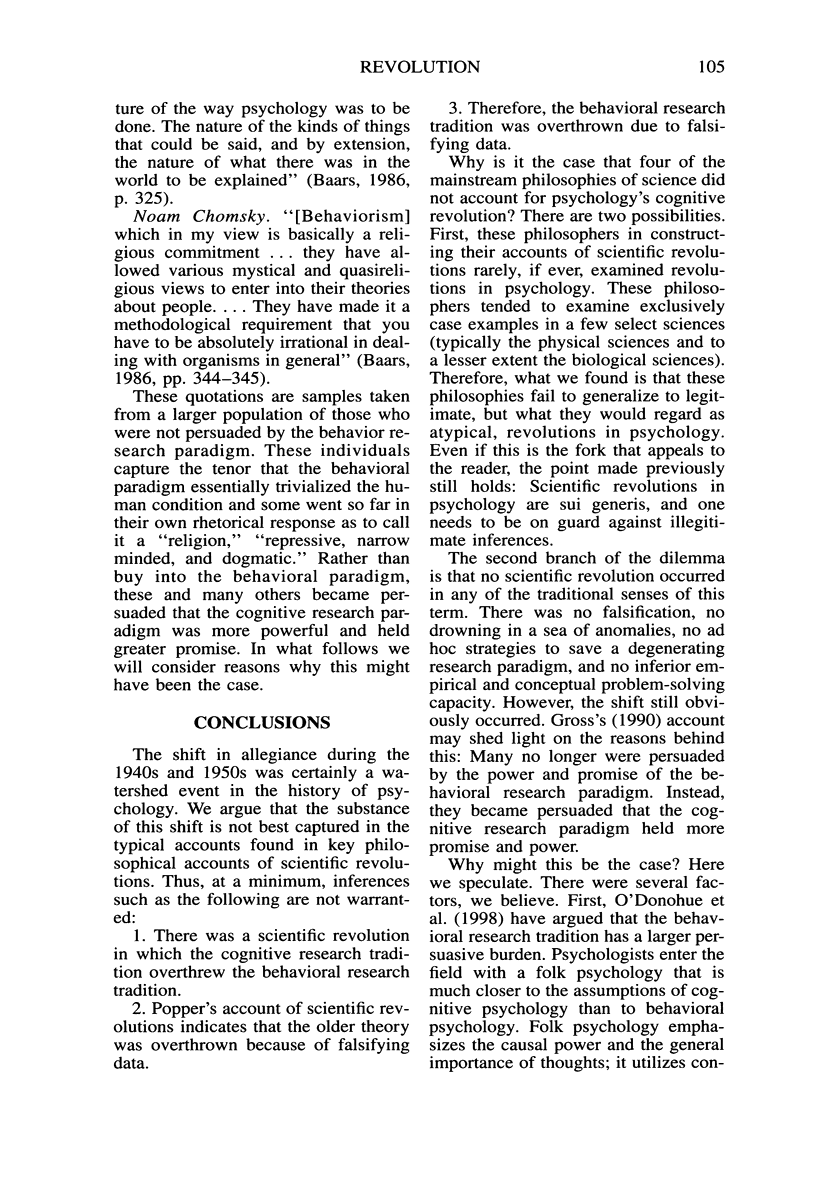
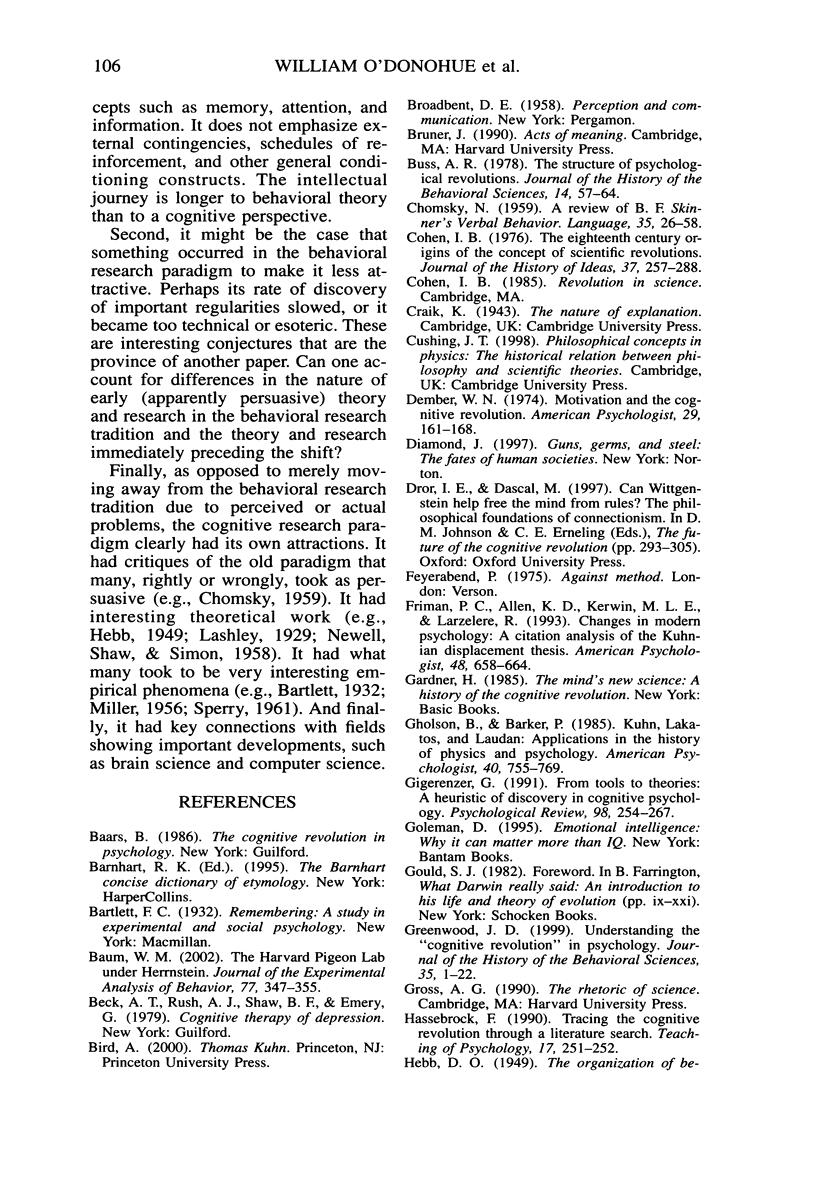
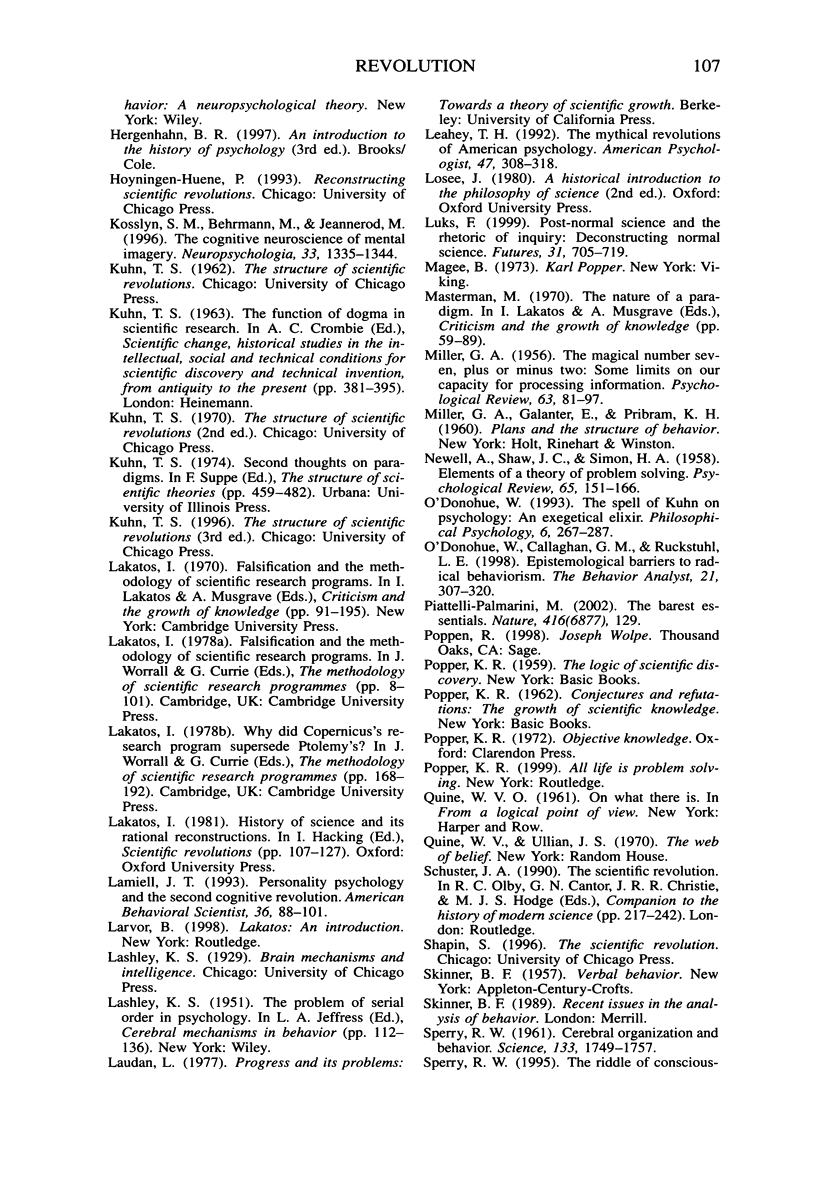
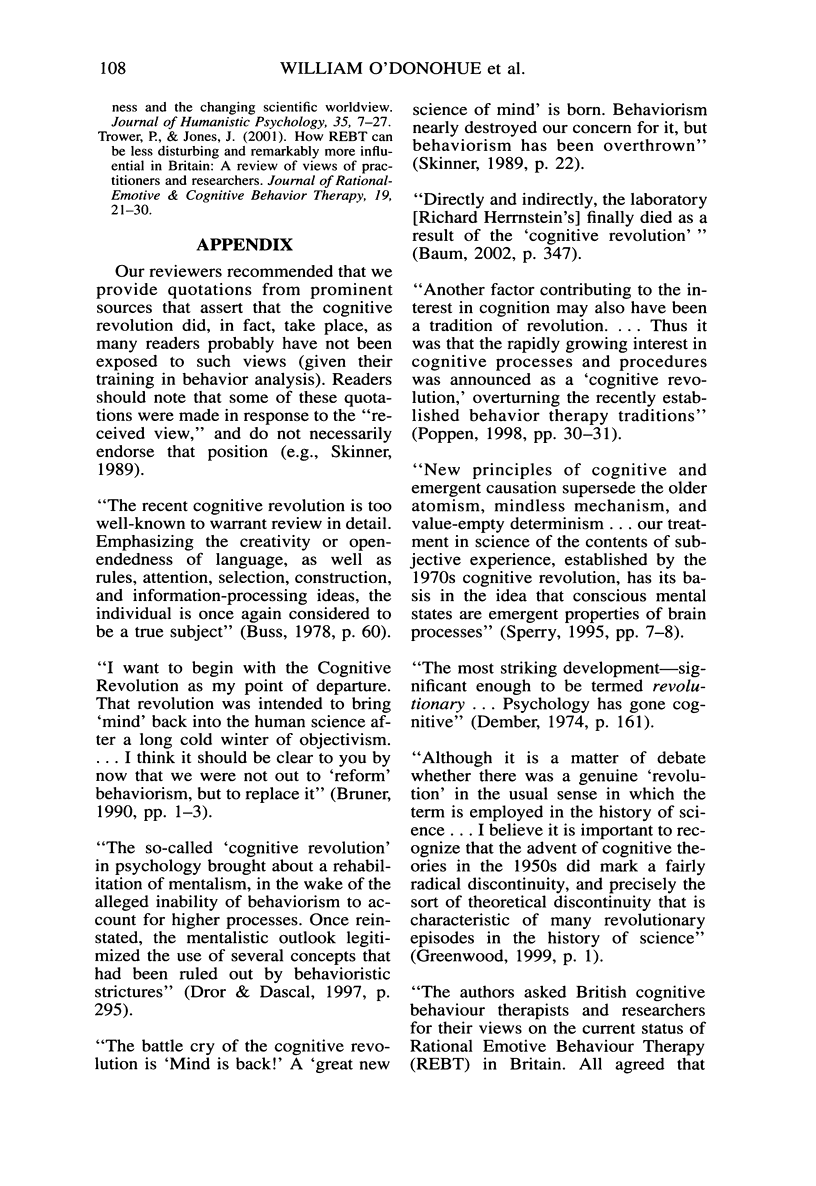
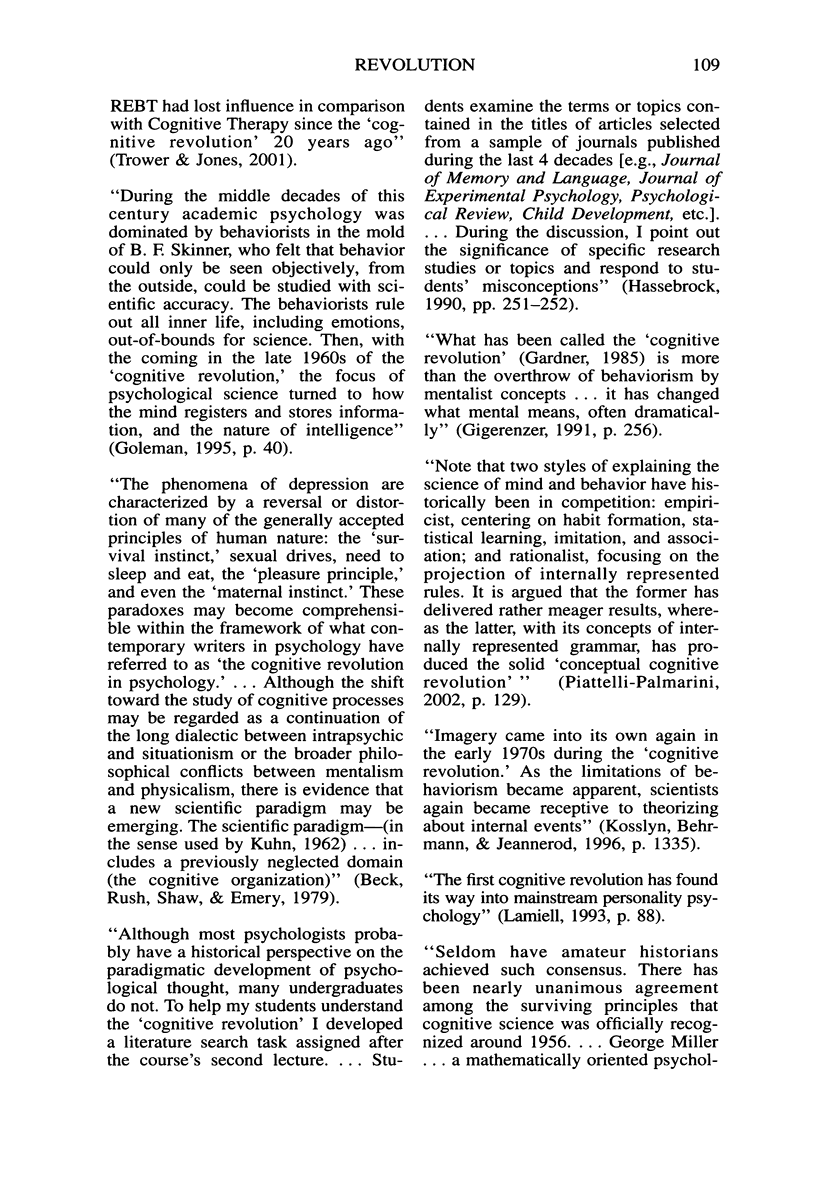
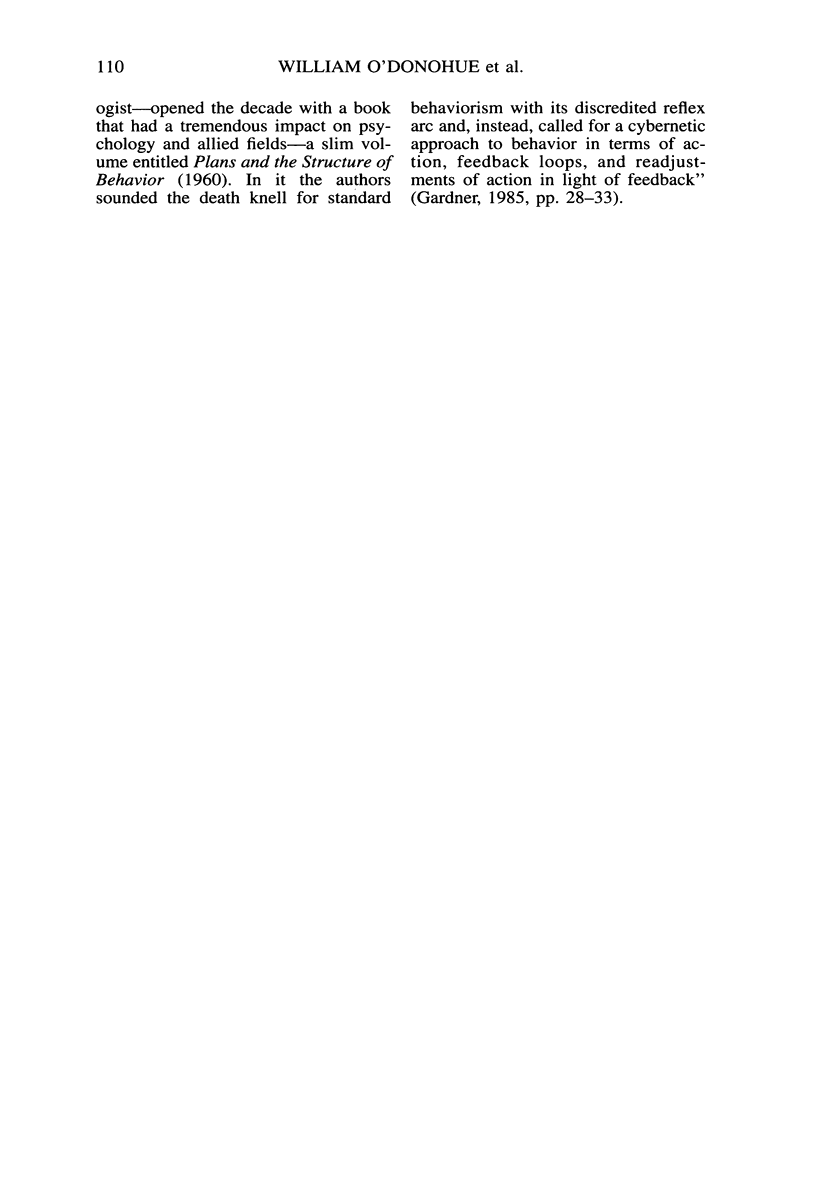
Selected References
These references are in PubMed. This may not be the complete list of references from this article.
- Baum William M. The Harvard Pigeon Lab under Herrnstein. J Exp Anal Behav. 2002 May;77(3):347–355. doi: 10.1901/jeab.2002.77-347. [DOI] [PMC free article] [PubMed] [Google Scholar]
- Buss A. R. The structure of psychological revolutions. J Hist Behav Sci. 1978 Jan;14(1):57–64. doi: 10.1002/1520-6696(197801)14:1<57::aid-jhbs2300140109>3.0.co;2-7. [DOI] [PubMed] [Google Scholar]
- Kosslyn S. M., Behrmann M., Jeannerod M. The cognitive neuroscience of mental imagery. Neuropsychologia. 1995 Nov;33(11):1335–1344. doi: 10.1016/0028-3932(95)00067-d. [DOI] [PubMed] [Google Scholar]
- MILLER G. A. The magical number seven plus or minus two: some limits on our capacity for processing information. Psychol Rev. 1956 Mar;63(2):81–97. [PubMed] [Google Scholar]
- O'Donohue W. T., Callaghan G. M., Ruckstuhl L. E. Epistemological barriers to radical behaviorism. Behav Anal. 1998 Fall;21(2):307–320. doi: 10.1007/BF03391970. [DOI] [PMC free article] [PubMed] [Google Scholar]
- Piattelli-Palmarini Massimo. Grammar: the barest essentials. Nature. 2002 Mar 14;416(6877):129–129. doi: 10.1038/416129a. [DOI] [PubMed] [Google Scholar]
- Sperry R. W. Cerebral Organization and Behavior: The split brain behaves in many respects like two separate brains, providing new research possibilities. Science. 1961 Jun 2;133(3466):1749–1757. doi: 10.1126/science.133.3466.1749. [DOI] [PubMed] [Google Scholar]


